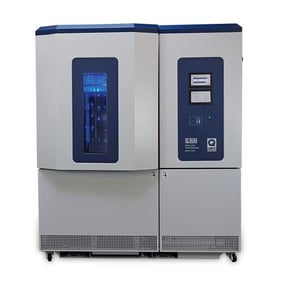
Scales vs. Balances – the basics.
While scales' designs and inner functions vary between brands, sizes, and even countries, they all work the same way by calculating weight and measuring force. Essentially, the scale measures the force (caused by gravity) of the load and converts the information to the reader. While scales are standard in grocery stores, industrial-size weighing, and even the bathroom, they’re also used for precise measurements in the medical industry, weighing loads for transport and even the transport vehicles themselves.
One of the earliest forms of measuring, a balance determines mass by physically balancing an unknown mass against a known mass – think of a see-saw. Mass is constant regardless of location. Today, most modern balance instruments typically use a force mechanism to create a balance by the force exerted by the unknown mass. To simplify, a balance compares an unknown sample to a known sample to neutralize the effect of gravity. Any changes in gravity due to location will affect both masses in the same way and negate the effect overall.
Scales vs. Balances – the nitty gritty
Today’s terminology would define a balance as a scale with a higher resolution. Balances have features including mass unit conversion, counting, percentage, limit functions for check weighing, or specific-gravity weighing. Scales, on the other hand, have gross, tare, and net indications, printing, and units-of-measure conversion.
In terms of components between the two, a scale normally consists of a load cell base, a display, A/D and a CPU processor. A balance, on the other hand, may have a load cell, force restoration, or tuning-fork weighing mechanism, a display, processor, and display graduations in excess of 100,000.
While scales normally do not specify repeatability, balances typically do have one displayed graduation. Although both the scale and balance can weigh a product, balances have limited capacity and size to maintain high display graduations.
Purchasing – Which is best for me?
Choosing between a scale and a balance largely depends on how you want to use the product. Will you be weighing large trucks or small batches of pharmaceuticals? Will you require indoor or outdoor use? While there are many things to consider, here are what we consider to be the top two:
- Readability: Typically, balances offer better readability than scales, especially when used for weighing in smaller increments.
- Capacity: How much weight will you be weighing? Don’t underestimate! Doing so could mean a faulty read or an expensive repair/replacement.
In the laboratory setting, balances are by far the most common weighing device used. As we have discussed, balances have a limited capacity, and you will find in most cases, scales are used for larger industrial applications. Regardless of your requirement and final choice of either a scale or a balance, regular service and maintenance are essential to keep your weighing device working at its very best.
Thermoline (being a laboratory equipment supplier) offers the Adam range of laboratory balances, offering readability from 1 µg up to 0.1g and capacities up to 120kg if needed. With our partnership with Adam, we can also offer calibration, maintenance, and even installation for your new balance. If you have any questions at all on laboratory balances and what may suit your requirements, please don’t hesitate to contact our sales team directly.






